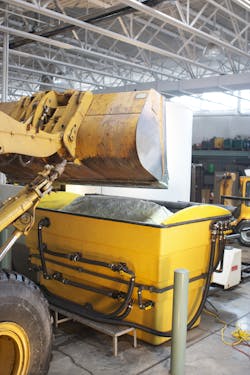St. Charles, Mo., sees long-lasting benefits with long-awaited winter-maintenance tool
It was a patient wait for the city of St. Charles, Mo. After listing a brine-making system on their budget for nearly five years, funding finally became available. During the wait period, however, the city spent time educating themselves on the benefits of brine for winter-maintenance practices to make sure they purchased exactly the type of system that would enhance their winter-maintenance efforts.
“We learned a lot about the benefits of using salt brine for pre-wetting and anti-icing at many of the snow conferences over the years,” said Daryl Hampel, street superintendent for the city. “An anti-icing system was listed on our capital improvement plan for about four or five years and this year we were finally able to make the purchase.”
Once the city had approval to purchase the equipment, Hampel invested additional time in researching available brine makers and discussing the pros and cons of varying systems with his neighboring communities.
“After looking at different brine-making systems, we talked to our neighboring municipalities and asked about the ones they were using,” he said. “Many systems people were using required that operators take samples of the brine and test it for accurate salinity. They told us, ‘If you can get something that can do the salinity concentration automatically, that’s the way to go.’ And that’s exactly what we did.”
The system Hampel and the city decided to purchase is called the AccuBrine automated brine maker, which is produced by Cargill Deicing Technology. The brine maker can produce approximately 5,000 gal of brine per hour employing an easy-to-use, fully automated process that produces brine with accurate salinity concentrations.
“It took the human error out of making brine,” Hampel said. “No one has to sit there and measure the salinity of the brine solution.”
Accurate salinity concentration was a primary factor in deciding to purchase their brine maker, as was the automatic process. Hampel and his team underwent a straightforward training session and it didn’t take long for a select group of managers and operators to take over the brine-making reins.
Dedicated to both pre-wetting and anti-icing practices, St. Charles maintains approximately 730 lane-miles. Throughout the winter season, Hampel and his team utilize their house-made brine for anti-icing as conditions warrant and implement pre-wetting tactics to ensure quicker reaction times and faster melting.
“We pre-wet our salt with brine as it hits the spinner and pre-treat the roads with brine when we’re able,” Hampel said. “The anti-icing makes such a difference on the roads. The brine does its job breaking the bond between the snow and the ice and the pavement, which makes our jobs a whole lot easier.”
